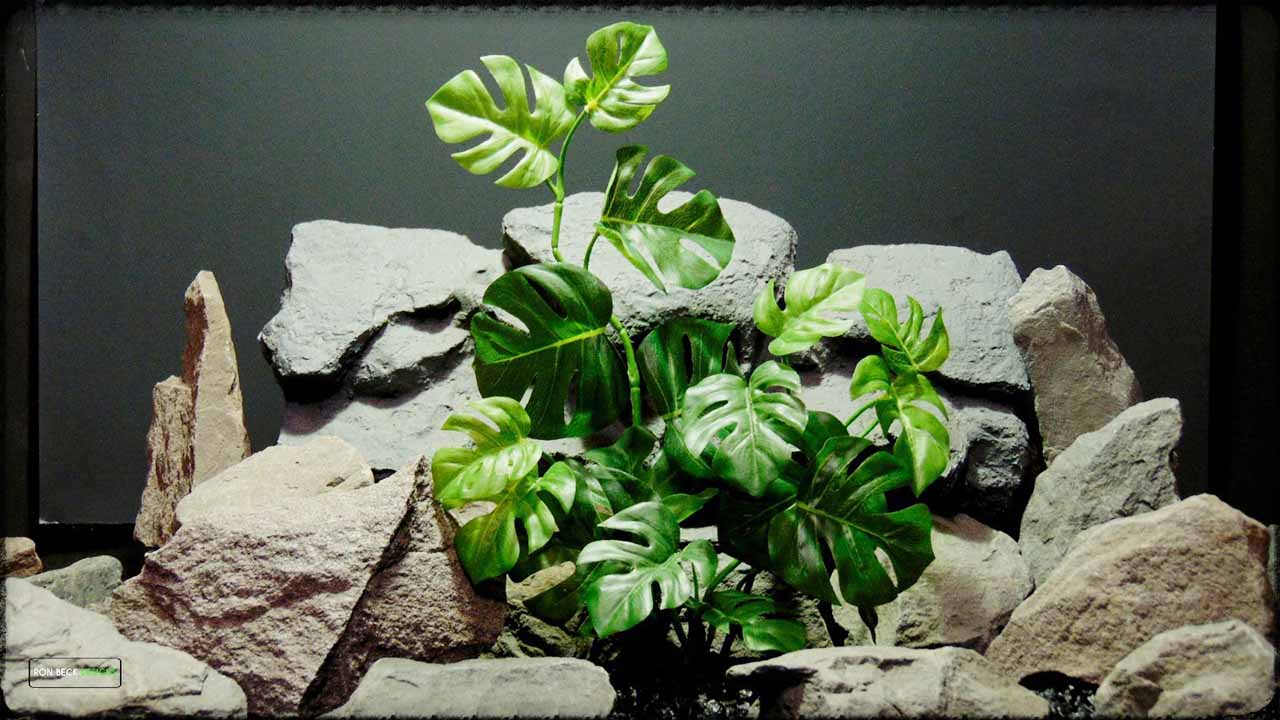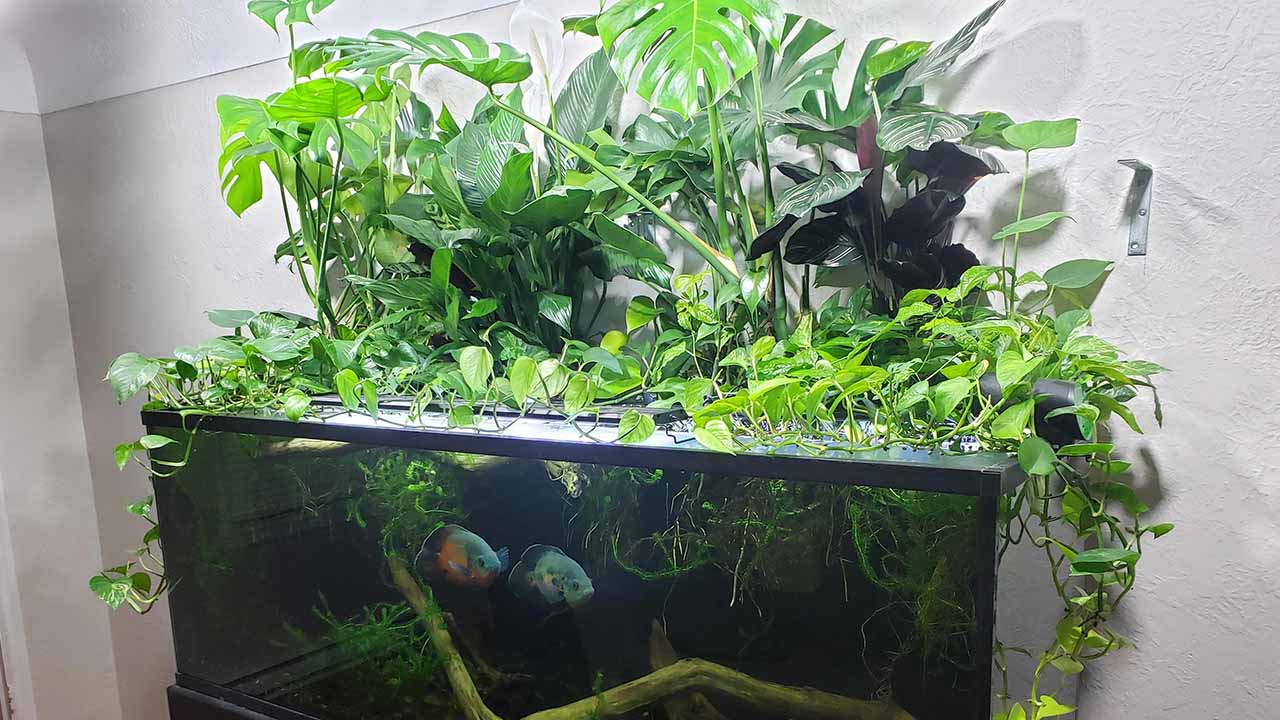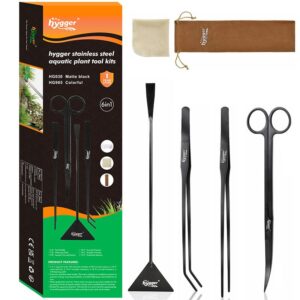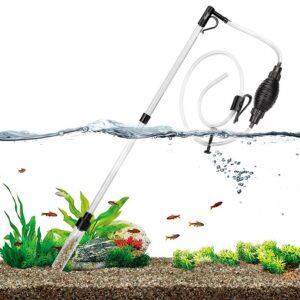The Monstera Deliciosa, also known as the Swiss Cheese Plant, is a popular houseplant prized for its lush, split-leaf foliage. But can this leafy wonder thrive underwater alongside your fish? In this blog, we’ll dive deep into the world of Monstera Deliciosas and aquariums, exploring whether this plant is safe for your aquatic pets and if it can truly flourish in a fish tank environment.
Content Table
We’ll also unveil the secrets to propagating your Monstera Deliciosa and shed light on the often-confused comparison between Monstera Deliciosa and Monstera Borsigiana. So, get ready to discover if the Monstera Deliciosa can truly become a stunning addition to your underwater world!

Monstera Deliciosa
Monstera Deliciosa is a climbing vine native to the rainforests of Central and South America. It’s known for its large, glossy green leaves, some reaching up to several feet in length. These impressive leaves boast characteristic splits and perforations, hence the nickname “Swiss Cheese Plant”. Monstera Deliciosa enjoys moderate, indirect light and thrives in environments with moderate humidity, making it a popular choice for beginner plant enthusiasts. In its natural habitat, it climbs up trees using aerial roots that help it reach sunlight filtering through the rainforest canopy. These same aerial roots can also help propagate the plant.
Is Monstera Deliciosa Toxic to Aquatic Pets?
Unfortunately, Monstera Deliciosa contains insoluble calcium oxalate crystals. These crystals are microscopic and can irritate the digestive system of fish and other aquatic creatures if ingested. Ingestion can cause swelling of the mouth and throat, making it difficult for fish to breathe and eat. In severe cases, it can lead to organ failure and death.
Monstera Deliciosa Aquarium
There’s good news, though! Monstera Deliciosa can still be a part of your aquatic world with a setup called a paludarium. A paludarium is a unique enclosure that combines aquatic and terrestrial environments. Here’s how to incorporate Monstera Deliciosa in your aquarium:
1. Planting
Create a dedicated section for the Monstera within your paludarium tank. This section should have a substrate suitable for terrestrial plants, like a mixture of orchid bark, sphagnum moss, and perlite. You can use rocks or driftwood to create a natural barrier between the aquatic and terrestrial zones. To encourage the Monstera to climb, provide a moss pole or other support structure within this section.
Plant the Monstera at a level where the base of the stem rests slightly above the water line. This allows the roots to access the water for hydration and nutrients while keeping the majority of the foliage above water.
2. Growth
Growth: Monstera Deliciosa thrives in the humid environment of the paludarium building. As it exhibits positive thigmotropism (directional growth in response to a stimulus), it will naturally climb the support structure you provided, cascading its foliage over the aquatic section of the paludarium. Regular trimming and propagation will not only maintain the desired plant architecture (size and shape) of your Monstera but also provide you with further diversification of the flora within your paludarium.

How to Propagate Monstera Deliciosa
Propagating Monstera Deliciosa is a great way to introduce new Monstera growth or even establish new plants altogether for your aquarium. Here’s a detailed guide:
1. Select your stem cutting
Choose a healthy stem with at least one node (the bump on the stem where leaves and roots emerge) and, ideally, a couple of leaves. The presence of leaves will aid the propagation process, as they will continue to photosynthesize and provide energy for root development.
2. Prepare the cutting
Using sharp, sterilized pruning shears, make a clean cut just below a node. You can also cut diagonally below the node to increase the surface area for root growth. Remove any leaves from the lower portion of the stem that will be submerged in the substrate.
3. Rooting in water (optional)
While Monstera Deliciosa can be propagated directly in the aquarium substrate, some prefer to root the cutting in water first. If you choose this method, place the stem cutting in a container filled with fresh, room-temperature water, ensuring the node is submerged. Place the container in a bright, indirect light location. Monitor the water level and change it every few days to prevent bacterial growth. Roots should begin to develop from the node within a couple of weeks. Once the roots reach a length of about an inch, you can proceed to plant the Monstera cutting in your paludarium.
4. Planting in the paludarium substrate
Choose a suitable location within the terrestrial section of your paludarium for the Monstera. Dig a hole in the substrate that’s deep enough to accommodate the stem cutting, ensuring the node is positioned just below the substrate surface. Gently but firmly press the substrate around the base of the cutting to secure it in place. Water the Monstera cutting thoroughly and continue to monitor the soil moisture in the following days, keeping it consistently moist but not waterlogged.

Monstera Deliciosa vs Borsigiana
| Characteristic | Monstera deliciosa | Monstera borsigiana |
| Leaf Size | Larger, broader | Smaller, narrower |
| Leaf Shape | More oval | More elongated |
| Leaf Texture | Thicker, more leathery | Thinner, more flexible |
| Leaf Fenestrations | Larger, more pronounced | Smaller, less pronounced |
| Growth Habit | Slower-growing | Faster-growing |
| Leaf Variegation | Less common | More common |
| Rooting Behavior | More aerial roots | Fewer aerial roots |
| Availability | Less common, often more expensive | More common, often more affordable |
| Overall Size | Tends to be larger | Tends to be smaller |
| Cultivation Difficulty | Can be more finicky | Tends to be easier |
End of the line
In conclusion, while Monstera Deliciosa isn’t ideal for a traditional fish tank due to its potential toxicity, it can flourish in a paludarium setting. This unique enclosure allows the Monstera to enjoy a humid environment, with its roots accessing water below while keeping the foliage safely above.
Propagating Monstera Deliciosa is a breeze, and with proper care, this stunning plant can become a vibrant addition to your aquatic world. By understanding the key differences between Monstera Deliciosa and Borsigiana, you can choose the perfect leafy companion for your paludarium tank. So, embrace the beauty and versatility of Monstera Deliciosa and create a thriving ecosystem that merges land and water!


Leave a comment